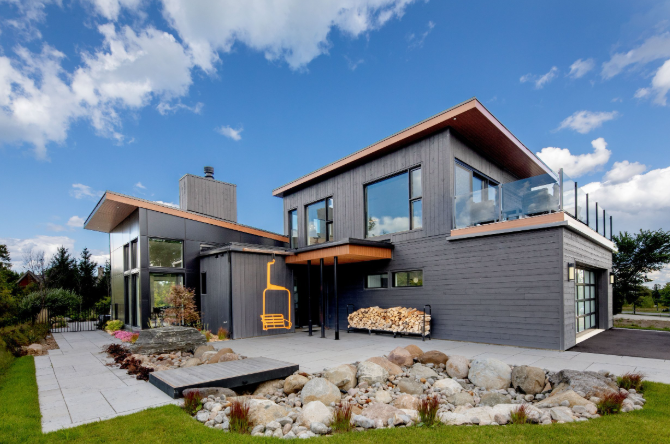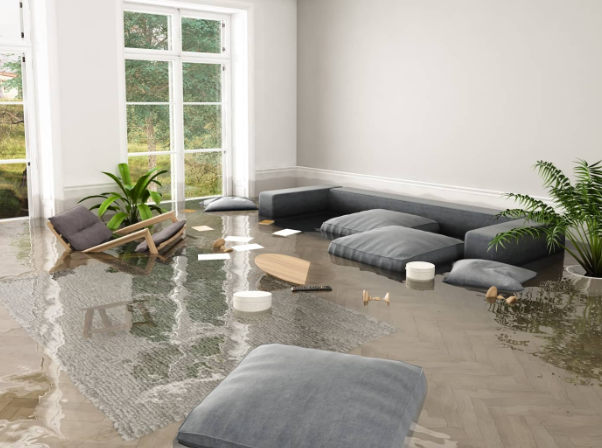
Crafting the Dream: How Custom Home Builders Bring Visions to Reality
Key Takeaways:
- Custom home builders offer personalized solutions, focusing on client dreams and lifestyles.
- Thorough research, planning, and collaboration with builders ensure a successful custom home-building process.
- Setting reasonable expectations requires an understanding of the associated expenses and schedules.
Introduction to Custom Home Building
Constructing a custom home is a significant life decision filled with excitement and anticipation. The essence of a custom home lies in its ability to reflect the owner’s unique tastes, preferences, and lifestyle down to the minute details. Unlike standard houses with predefined layouts and features, custom homes open up endless possibilities. You can design every aspect, from intricately planned floor plans to the most minor design details, making each home a masterpiece. Amid this exhilarating journey to create a personalized haven, high-end custom builders become vital allies. With their expertise, they transform abstract dreams into tangible realities, preserving the essence of your vision throughout the myriad processes involved in home construction.
The Role of Custom Home Builders
The architects of dreams and custom house builders turn designs into livable, breathing environments. Their role transcends mere construction; they orchestrate a symphony of creativity, precision, and craftsmanship to bring a client’s vision to life. These builders are seasoned experts in managing the sprawling labyrinth of creating a bespoke residence. They navigate zoning laws, handle permit acquisitions, coordinate with subcontractors, and ensure that every detail is aligned with the homeowner’s desires. Throughout this complex process, they maintain harmony between functionality and aesthetics, culminating in a cohesive, personalized home that echoes the owner’s original vision. Their effortlessly managing these diverse tasks makes them indispensable in constructing custom homes.
Planning Your Custom Home
The journey towards a custom home begins with a well-crafted plan. For potential homeowners, this phase is critical. It can dictate the project’s outcome and ease any hurdles. As noted in resources like Guiding Homeowners Through the Steps of Building Their Dream Home, the planning stage involves informative research and setting definitive goals. Homeowners should explore various architectural styles, technological innovations, and sustainable practices to integrate them into their designs. The initial plans should consider essential aspects such as location, climate impact, and lifestyle needs, all while incorporating budget constraints. Methodical planning not only facilitates smoother execution but also allows homeowners to foresee potential challenges, creating a resilient path toward achieving their dream homes.
Setting Your Budget and Timeline
Crafting a custom home requires a comprehensive understanding of financial feasibility, as thorough budget considerations are fundamental to the project’s success. An adequate budget should encompass all aspects of the building process, including construction costs, labor expenses, permits, inspections, and potential unforeseen contingencies. It is crucial to account for fluctuations in material costs and labor rates, which can vary based on local market conditions. Resources offer invaluable tools and insights for managing finances effectively, helping homeowners navigate the complexities of budgeting with clarity.
Establishing a practical timeline is equally essential to financial planning. Homeowners should work closely with their builders to create a realistic construction timetable considering the project’s scale, material availability, and subcontractor schedules. It’s important to consider potential delays caused by weather fluctuations, supply chain disruptions, or necessary changes to the design that may arise during the construction phase.
By creating an accurate budget and timeline, homeowners lay the groundwork for a smoother construction experience. This proactive approach helps mitigate stress and surprises during the building process, ultimately leading to a successful project completed on time and within financial limits. Adhering to these foundational principles enhances the quality of the home-building journey and ensures that the final result aligns with the homeowner’s vision and expectations.
Key Considerations in Custom Home Design
In the design phase, creativity intersects with practicality, demanding a delicate balance between aesthetic aspirations and functional requirements. Key considerations during this stage include optimizing floor plans to facilitate seamless flow and efficiency and ensuring that spaces are usable and comfortable. Choosing finishes and materials that complement the homeowner’s style is essential, whether going with softer textures for peaceful retreats or sturdy surfaces for high-traffic areas.
Integrating environmentally friendly features is essential in enhancing sustainability within the design. It can include installing energy-efficient windows that reduce heat loss, selecting low-VOC paints to improve indoor air quality, or incorporating renewable energy sources such as solar panels to lessen reliance on fossil fuels. The foresight in this process is vital; as families grow and individual needs evolve, creating flexible spaces that can adapt over time is essential.
In addition to being a good environmental decision, prioritizing energy-efficient designs can result in significant long-term financial benefits due to lower electricity costs. Choosing appliances with high energy ratings, utilizing smart home technologies, and considering passive solar design elements all contribute to a more sustainable and cost-effective home.
Deciding on these intricate elements requires collaboration among various stakeholders, including architects, interior designers, contractors, and homeowners. This collaborative effort results in a welcoming and helpful room for everyday life, guaranteeing that the finished design represents a balanced combination of beauty and utility. It’s about creating a home that meets current needs while being adaptable for the future, ultimately enhancing the quality of life for its residents.
Collaborating with Your Builder
A successful custom home project thrives on a collaborative partnership between the homeowner and builder. This dynamic relationship is built on open communication, trust, and mutual respect. From the first meeting, the homeowner must articulate their ideas, design preferences, and any specific requirements, such as desired materials, budget constraints, and functionality needs for their new home.
Establishing a robust communication channel ensures that any issues or modifications in the project plan can be addressed promptly and effectively. An experienced builder will welcome questions and encourage an open exchange of feedback, providing expert advice that simplifies complex design, structure, and logistics decisions.
Moreover, regular updates and meetings throughout the construction process foster transparency and keep both parties aligned on progress and timelines. This partnership, rooted in cooperation and understanding, often translates into a home that meets and exceeds the owner’s vision, showcasing personalized features and thoughtful designs that reflect their unique lifestyle and preferences.
Common Challenges and Solutions
Building custom homes can present various challenges often unique to each project. Among the most common issues faced are unforeseen design changes that arise during the planning phase, possibly due to shifts in client preferences, material availability, or regulatory requirements. Regulatory roadblocks can pose significant hurdles, such as navigating complex zoning laws, obtaining necessary permits, or complying with updated building codes. Additionally, unexpected site conditions, such as poor soil quality, hidden natural features, or weather delays, can complicate the construction process.
However, these difficulties may be lessened successfully with more flexibility and skilled problem-solving. To navigate these obstacles, skilled builders often employ creative solutions, such as adaptive design strategies that allow for modifications without significant disruptions or innovative construction techniques like modular building or prefabrication.
Regular update meetings between builders and homeowners are crucial for maintaining clear communication, allowing for proactive discussions about potential issues and solutions. Setting contingency plans, such as allocating a budget for unexpected expenses or planning alternative construction schedules, helps address issues as they arise. This approach minimizes disruptions and ensures that projects remain on schedule and within budget constraints.
With the right approach, a well-coordinated team, and a willingness to adapt, potential hurdles can be transformed into opportunities to enhance the overall project. By creatively addressing challenges, builders can meet clients’ needs and deliver innovative, high-quality results that exceed expectations.
Final Thoughts on Custom Home Building
Building a custom home is a profoundly transformative journey for any homeowner, marking a significant milestone in their lives. It offers an unparalleled opportunity to infuse personal creativity, individuality, and thoughtful care into a living space that reflects their unique lifestyle and aspirations. From the initial inspiration drawn from personal experiences, travel, or design aesthetics to the meticulous selection of materials and finishes, every decision shapes a truly one-of-a-kind home.
While the path to a custom home may present challenges—such as navigating zoning laws, adhering to building codes, and staying within budget—these obstacles can be effectively managed through careful planning. Creating a detailed project timeline, engaging in thorough financial assessments, and collaborating closely with trusted architects, designers, and contractors are essential steps in this journey. Regular communication with these professionals fosters a smoother building process and builds a strong partnership that ensures the homeowner’s vision is respected and realized.
The culmination of this diligent effort is a custom home that transcends mere bricks and mortar; it becomes a testament to the homeowner’s vision, perseverance, and synergy with skilled artisans. Each room tells a story: the open-concept kitchen designed for family gatherings, the cozy reading nook crafted for quiet reflections, or the spacious outdoor patio that invites summer barbecues. Embracing this home-building endeavor’s unique challenges and joys, those who aspire to create their ideal sanctuary will ultimately be rewarded with a space that vibrantly resonates with their style, functional needs, and emotional connection—making it a true haven for years to come.


